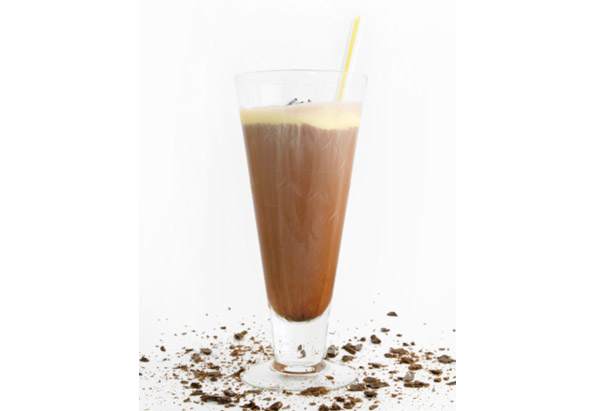Fitness writer Gretchen Reynolds shares her new favorite ways to stay in shape. We bet you'll love them, too. (Hint: Chocolate is involved.)

Photo: Thinkstock
Research a book about exercise science and you'll learn many things, including that sit-ups can be bad for your back and running good for your knees; that massage may not, in the ways long suspected, ease overtaxed muscles (even though it feels wonderful); and that most of the health benefits of exercise, for someone who's been wedded to her couch, accrue in the first 20 minutes or so of a workout. But some lessons have proved to be especially persuasive. These are the tips I actually use, to the benefit of my body and the occasional amusement of my husband.
Stand up to stave off pounds.
Writing about exercise almost ensures that you won't have time to do any, and I had expected to emerge from my writing cave wan and pudgy. Wan happened. But pudgy didn't, thanks in part to my reading about studies conducted at the University of Massachusetts, in which volunteers spent one day sitting and then another standing or walking nonstop. The difference in energy expenditure was "hundreds of calories," Barry Braun, PhD, a kinesiologist who oversaw the study, told me. I now leave my chair while talking on the phone and keep a music stand in my office so I can spend some time upright while reading. I love science that validates both my vanity (don't want a wide waist) and my laziness (happy to just stand there).
Next: The stork method of tooth brushing and why you should be using it
Stand up to stave off pounds.
Writing about exercise almost ensures that you won't have time to do any, and I had expected to emerge from my writing cave wan and pudgy. Wan happened. But pudgy didn't, thanks in part to my reading about studies conducted at the University of Massachusetts, in which volunteers spent one day sitting and then another standing or walking nonstop. The difference in energy expenditure was "hundreds of calories," Barry Braun, PhD, a kinesiologist who oversaw the study, told me. I now leave my chair while talking on the phone and keep a music stand in my office so I can spend some time upright while reading. I love science that validates both my vanity (don't want a wide waist) and my laziness (happy to just stand there).
Next: The stork method of tooth brushing and why you should be using it
Two words: chocolate milk.
An enticing body of nutritional science suggests that you should eat or drink immediately after exercising, in order to help your muscles recover. If the foods you ingest contain both carbohydrates and protein, your muscles will refuel more fully. And if the food is low-fat chocolate milk, even better; it contains a nearly physiologically ideal ratio of carbs to protein. Experiments have shown that people who drink chocolate milk after a workout recover better, lose more body fat, and gain more muscle than subjects who have a sports drink. The caveat: If you don't exercise vigorously for at least 45 minutes, you don't need recovery chocolate. That's incentive enough to get me out on the trails a few times a week.
Brush like a stork.
Before I began my book, I would have told you I had no problem with my balance. Then, following the advice of Jay Hertel, PhD, a professor at the University of Virginia who studies wobbly people, I tested myself, standing on one leg and almost immediately headbutting the wall. Ever since, I've been training. My regimen consists of a single exercise—brushing my teeth on one leg. "It sounds silly," Hertel says, "but if you do that for two minutes a day, you're working your balance really well." Bonus: After months of watching me floss and wobble, my husband remains amused—which is good for another kind of health, that of our marriage.
Gretchen Reynolds's book The First 20 Minutes: The Myth-Busting Science That Shows How We Can Walk Farther, Run Faster, and Live Longer (Hudson Street) is out this month.
Stay in Shape...and Have Fun
An enticing body of nutritional science suggests that you should eat or drink immediately after exercising, in order to help your muscles recover. If the foods you ingest contain both carbohydrates and protein, your muscles will refuel more fully. And if the food is low-fat chocolate milk, even better; it contains a nearly physiologically ideal ratio of carbs to protein. Experiments have shown that people who drink chocolate milk after a workout recover better, lose more body fat, and gain more muscle than subjects who have a sports drink. The caveat: If you don't exercise vigorously for at least 45 minutes, you don't need recovery chocolate. That's incentive enough to get me out on the trails a few times a week.
Brush like a stork.
Before I began my book, I would have told you I had no problem with my balance. Then, following the advice of Jay Hertel, PhD, a professor at the University of Virginia who studies wobbly people, I tested myself, standing on one leg and almost immediately headbutting the wall. Ever since, I've been training. My regimen consists of a single exercise—brushing my teeth on one leg. "It sounds silly," Hertel says, "but if you do that for two minutes a day, you're working your balance really well." Bonus: After months of watching me floss and wobble, my husband remains amused—which is good for another kind of health, that of our marriage.
Gretchen Reynolds's book The First 20 Minutes: The Myth-Busting Science That Shows How We Can Walk Farther, Run Faster, and Live Longer (Hudson Street) is out this month.
Stay in Shape...and Have Fun
- Dr. Oz's 20-minute workout
- The most flattering gym gear ever
- 7 fun exercises your trainer doesn't want you to know about




